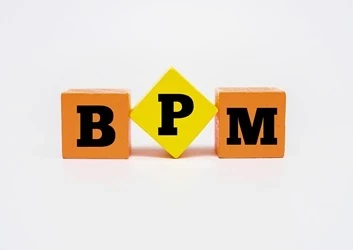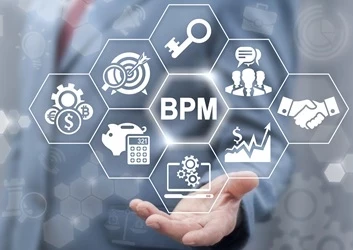Companies are being sold, merged, and going out of business every day. These are casualties of the current market and an inability to adjust quickly. In this fast changing market, is it time that process professionals refocus their efforts to gaining competitive advantage? asks Dan Morris. It might be critical for your business' survival.
The most important action in any company may arguably be gaining and keeping an advantage over competition. Without that, the company can be the most cost efficient operation in the world, but it will fail. If you cannot beat the competition - at least some of the time - you will be out of business. If you cannot gain market share you will stagnate and eventually you will lose ground and still be out of business.
It is really just that simple.
So what is the most important thing that BPM can deliver? Although many will think this to be heresy, it is not cost reduction or even quality improvement! Both are important, but not critical. What is critical is helping deliver a competitive advantage. The second most critical support activity is the ability to keep that competitive advantage. That will keep you in business. And, staying in business is really necessary for anything else to matter.
My position is that while any of the usual goals - cutting costs/downsizing/rightsizing/outsourcing - are clearly important, cost reduction is really a second level type of goal. However, cost reduction has become the primary goal for operational improvement in most companies. But should it be, or should cost reduction simply be part of something bigger? I submit that while cost issues should be part of any project’s success criteria, it should be trumped by a drive to increase the ability of the company to compete and gain market share.
Think about these questions:
- Will cutting cost do more than improve your profit margin? Clearly important, but will that help you stay in business?
- Will cutting cost increase the demand for your product or service? Will it help you gain market share? Will it help to differentiate you and help you retain and gain customers?
- Is reducing head count really necessary [i.e. without it you will go out of business]? Or, is staff reduction simply a move to cut cost? Do your people have specialty skills that you will need if you grow?
- Unless quality is really bad, will a couple percent quality improvements make the difference between business success and failure?
While these things are important and should be built into any project, they really seldom keep you in business. Only beating the competition and winning business keeps you in business.
Obvious – yes! Fundamental – yes! But have we lost sight of these basic needs in our drive to reduce cost? For many the answer is again a yes.
|
Is ability to change quickly a lifeline for business? |
The fact is that staying in business requires a good executive team, a good vision, a good strategy and the ability to change quickly and implement the capabilities and operational changes needed to gain an advantage over the competition. This ability to deliver change rapidly is a requirement critical to business survival. Anyone who can deliver flexible, rapid operational change will be able to move faster than most other companies to take advantage of opportunity. A lack of this ability will seriously impair companies in the near and long range future. |
I believe that this distinction is critical today. Companies are being sold, merged, and going out of business every day. These are casualties of the current market and an inability to adjust quickly. In some of these companies the senior team made wrong calls. But if the company could not execute good calls quickly, the quality of the calls really doesn’t matter. Nothing gets done.
That is why I believe that while insightful decisions are needed, the ability to deliver the changes these decisions require is as important as the quality of the decisions themselves. Which brings us to BPMS supported BPM.
Delivering an ability to change quickly is the real role of BPMS and the creation of a BPMS supported BPM environment. That is what moving to BPM and the use of a BPMS is really all about. But this objective has been lost in the rush to cut costs and with notable exceptions, BPMS supported BPM has been used mostly for small strategic projects. This is not a declaration that cost reduction or quality improvement are not needed or not worth pursuing. It is rather a declaration that business transformation must consider improving a company’s ability to compete as a primary goal.
Strategy and BPM
Business Strategy and its translation by Business Architecture into business change requirements, drives broad business evolution. It provides the requirement and the justification. Strategy without an ability to implement it accurately, inexpensively, and with low risk quickly creates a competitive disadvantage. Part of the risk is that when strategy changes faster than the ability of the organization to keep up, the resulting gap causes misalignment of activity and process to the delivery of the needed capabilities. Most importantly it costs opportunity and it impairs the ability of the company to compete.
Yes, it also raises cost, increases error, and generally has people doing a lot of unneeded work. So, it gives a double hit. It hurts the future and the present strength of the company.
|
However, the best strategy in the world will not help eliminate these costs and weaknesses if you cannot implement it. And while a vision may look years into the future, parts of any strategy will be out-of- date in a few months as the dynamic global business community keeps looking for new ways to gain an advantage. So, even if you could implement the best strategy, you would gain nothing if you could not continually modify it to keep up with the market changes and management’s vision. |
If the market moves on, will you left behind? |
But have your operational improvement efforts helped to deliver this capability? Answer this yourself for your company. For most, the answer is no. The reason is the focus on efficiency. While cost reduction helps the bottom line and is absolutely necessary, it does little to improve operational alignment to strategy or the ability to change based on strategy.
Realistically, if you could implement strategy quickly at all levels in the company (with IT support) and you could change the operation quickly to adjust to the market, would it give you an advantage? For some the answer may well be that it wouldn’t matter. However, I think only a few could honestly answer that way.
What this all adds up to is the simple fact that if a company loses its ability to compete, it will be in real trouble. If a company’s inability to successfully compete lasts long enough, the company will be a candidate for acquisition or if it lasts even longer, it will go out of business. This inability to implement strategic change has been a real problem for senior management in the past for many companies.
To help avoid this situation it is clear that senior management should consider investing in the development of the underlying infrastructure and methods/approaches needed to deliver rapid operational change. Again, this is where BPM and a BPMS come into play.
Business Intelligence
For many managers, the answer to gaining a competitive advantage has been an attempt to focus on business intelligence reporting. This ability to obtain solid information and look for trends and other indicators cannot be undervalued. High quality information is critical and it is a piece of the capability and decision making puzzle that can make a real difference. Unfortunately, like any technique, approach, tool, report, or whatever, business intelligence cannot have a solid impact unless decisions can be implemented quickly.
Taking months and years to implement a change is not good enough any longer – if it ever really was. This is especially true if your competition can move faster than you can. Again, the best information and decisions can be rendered useless if you cannot implement the changes needed to take advantage of opportunity before others can.
Creating this ability to move quickly to implement change is the real advantage of BPM and a BPMS supported business operation. It is also thus a competitive advantage.
Adding a new focus
Adopting a focus on creating competitive advantage will mean different things to different companies. All that we have looked at is important. But without the ability to deliver competitive advantage each will have limited to minimal value. And, the same is true for most things in a business. The fact is that competitive advantage can come from anywhere and involve almost anything.
Each industry will have its own challenges and each product line will have different competitors – each of whom will have different weaknesses that should be exploited. So, there is no one way to approach this.
The question is, "do you know what will give you a competitive advantage in each of your company’s lines of business?" Saving money in operations is great for improving margins, but it usually doesn’t give you a competitive advantage. If you don’t pass the savings on to customers in the price of your product, why would a customer care if you save money in making or delivering a product? Where is the competitive advantage if the customer doesn’t care about the result of a change in your operation?
The things that will give you a competitive advantage are not always obvious. It depends on the market and the competition. But, someone in your company should know what they are and these factors should be filtered into all change to provide an extra dimension to the anticipated benefit of any given project.
So, there are really three parts to this issue. The first is to deliver competitive advantage through strategy, and the second, almost equally important need, is to consider competitive advantage in all business improvement projects. The third issue then moves us from these "what do we need to do" issues to the place where most operations have a problem – the ability to deliver change fast enough to make a difference.
The bottom line is that managers need to keep a focus on competitive advantage and add their concerns for creating and maintaining this advantage in everything that is done. For senior business officers and IT managers, this responsibility will need to include the creation of a blended business/IT/BPM environment that can deliver new business solutions fast enough to support the company’s drive to build elements of competitive advantage into all change.
As always, I am interested in your thoughts.
[inlinead]





















